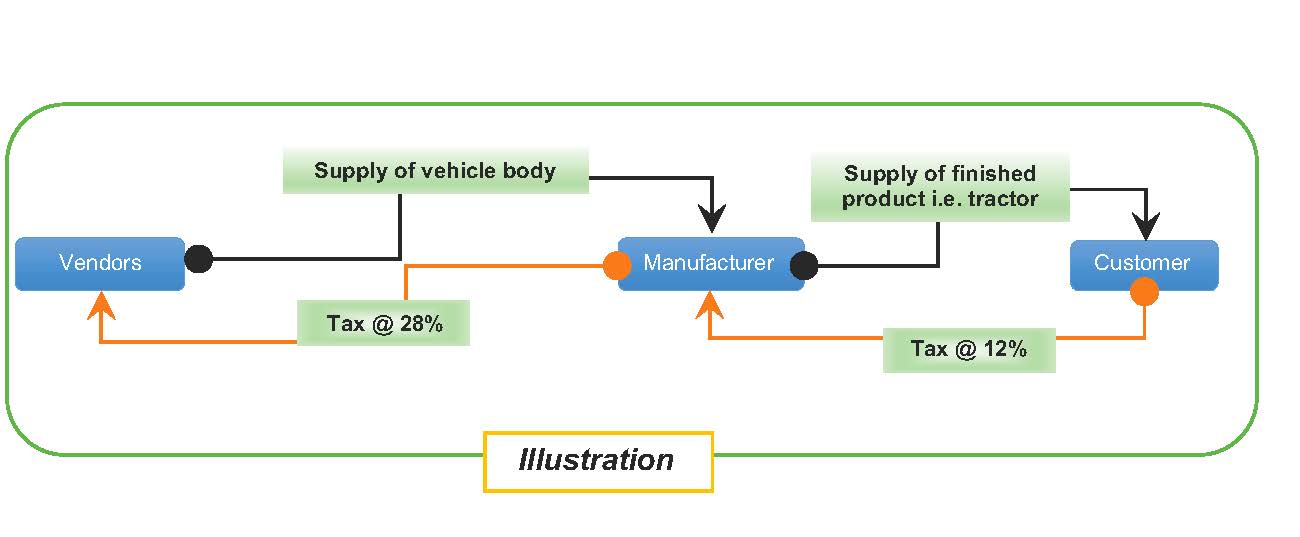Imbibe technology – this has been the mantra of the Governments for years now. In context of income tax laws, while the first chapter can be dedicated to use of technology for tax compliances, we have now ushered into the more delicate phase of transforming assessments, appeals and the likes to a faceless regime through use of technology. Whatever be the reason – whether for sake of transparency, ease of business, minimizing interaction with authorities, mapping accountability, or simply cleaning the system, there is no doubt that the change is desirable. However, if not implemented within the realms of Natural Justice, this will be a recipe of unwanted litigation. Also, in view of our system of laws and constitutional provisions, non-observance of principles of Natural Justice will spell failure of this novel system.
The scheme of Faceless Assessment
The legislature has enshrined a detailed procedure for conduct of faceless assessment under the provisions[1] of the Income Tax Act, 1961 (‘Act’). The National Faceless Assessment Centre (‘NFAC’), as the nodal wing of tax administration, acts as the fulcrum for the conduct of assessment, coordinating between the taxpayer and other wings comprising of assessment units, the review units and the technical units, each bestowed with specific functions.
As part of the procedure, faceless assessment requires the assessment unit to make in writing a draft assessment order, either accepting income returned by the taxpayer or making variation to the said income, providing therein details of penalty proceeding to be initiated, if any. The assessment unit is required to consider all the relevant material available on record while making the draft assessment order. A copy of such order is sent to the NFAC. The NFAC upon examining the draft assessment order may decide to:
- Finalize the assessment in case no variation prejudicial to the interest of assessee is proposed as per the draft assessment order, serve such order and notice for initiating penalty proceedings, if any, to the taxpayer, along with the demand notice, or
- Provide an opportunity to the taxpayer, in case any variation prejudicial to the interest of taxpayer is proposed, by serving a notice calling upon him to show-cause as to why the proposed variation should not be made; or
- Assign the draft assessment order to a review unit for conducting review of such order.
Where the taxpayer has received the show-cause notice, he may furnish his response to the NFAC within the stipulated timelines which thereafter is required to be considered by the assessment unit. The assessment unit is required to make a revised draft assessment order and send it to NFAC after taking into account the response furnished by the taxpayer.
NFAC, upon receiving the revised draft assessment order would proceed to finalise the assessment as per the revised draft assessment order and serve a copy of such order and notice for initiating penalty proceedings, if any, to the taxpayer.
As is notable from the aforesaid procedure, the law requires issuance of a show-cause notice (‘SCN’) to the taxpayer where any variation is proposed to the income declared, prior to issuance of final assessment order.
What if procedure is not followed?
It is being witnessed that in many cases, the NFAC has proceeded to issue final assessment orders with variation without issuance of SCN. In some cases, where SCN has been issued and objections filed by the taxpayer, the taxpayer is still denied the opportunity of personal hearing even where requested by the taxpayer. The question that arises is how tenable is the action of the tax authorities and what legal remedy do the taxpayers have?
The classical approach will be to file an appeal with the first appellate level i.e. Commissioner (Appeals) and work through the prolonged spell of litigation over years. Even if one reconciles to this fate, an impediment to such approach is the requirement to pay 20% of the disputed tax upfront for grant of stay of balance tax demand as per the prevailing CBDT directions. This has material impact on the cash flows of taxpayers which are anyway squeezed given the prevailing conditions. Thus, for taxpayers willing to explore unconventional opportunity, it may be worthwhile to examine the writ jurisdiction of the High Courts under Article 226 of the Constitution.
Writ jurisdiction of High Court in tax matters
Article 226 of the Constitution confers wide powers to High Courts to issue writs. The remedy of writ is not absolute but discretionary in character. If the High Court is satisfied that the aggrieved party has an adequate or suitable relief elsewhere, it can refuse to exercise its jurisdiction.[2] The Court, in extraordinary circumstances, may exercise the power if it concludes that there has been a breach of principles of natural justice or procedure required for decision has not been adopted. Thus, the normal rule is that a writ petition under Article 226 of the Constitution ought not to be entertained if alternate statutory remedies are available, except in cases falling within the well-defined exceptions. In this regard, the Supreme Court in Commissioner of Income Tax and Others vs. Chhabil Dass Agarwal[3], observed as follows:
‘19. Thus, while it can be said that this Court has recognized some exceptions to the rule of alternative remedy, i.e., where the statutory authority has not acted in accordance with the provisions of the enactment in question, or in defiance of the fundamental principles of judicial procedure, or has resorted to invoke the provisions which are repealed, or when an order has been passed in total violation of the principles of natural justice, the proposition laid down in Thansingh Nathmal case, Titagarh Paper Mills case and other similar judgments that the High Court will not entertain a petition under Article 226 of the Constitution if an effective alternative remedy is available to the aggrieved person or the statute under which the action complained of has been taken itself contains a mechanism for redressal of grievance still holds the field. Therefore, when a statutory forum is created by law for redressal of grievances, a writ petition should not be entertained ignoring the statutory dispensation.’
Therefore, extraordinary circumstances meeting the prerequisite for exercise of writ jurisdiction of the High Court arise where statutory authorities have not acted in accordance with the provisions of the enactment, or in defiance of the judicial procedure, or when an order has been passed in total violation of the principles of natural justice.
In context of the faceless assessment scheme, provisions of the Act specifically require issuance of a SCN where any variation is proposed to the income declared. These provisions cannot be considered redundant or insignificant. These embody the basis right of fair hearing to the taxpayer and adherence to principle of natural justice. The basic principle of natural justice requires the authority to give the affected party reasonable notice. Such notice must specify the grounds on the basis of which an action is proposed to be taken so as to enable the noticee to defend himself. In this regard, it will be useful to take note of the observation of the Supreme Court in the case of UMC Technologies Private Limited versus Food Corporation of India and Anr.[4] as under:
“13. At the outset, it must be noted that it is the first principle of civilised jurisprudence that a person against whom any action is sought to be taken or whose right or interests are being affected should be given a reasonable opportunity to defend himself. The basic principle of natural justice is that before adjudication starts, the authority concerned should give to the affected party a notice of the case against him so that he can defend himself. Such notice should be adequate and the grounds necessitating action and the penalty/action proposed should be mentioned specifically and unambiguously. An order travelling beyond the bounds of notice is impermissible and without jurisdiction to that extent. This Court in Nasir Ahmad v. Assistant Custodian General, Evacuee Property, Lucknow and Anr.,1 has held that it is essential for the notice to specify the particular grounds on the basis of which an action is proposed to be taken so as to enable the noticee to answer the case against him. If these conditions are not satisfied, the person cannot be said to have been granted any reasonable opportunity of being heard.”
More specifically, the Supreme Court in the case of Gokak Patel Volkart Limited vs Collector Of Central Excise[5], while examining the provision of section 11A of the Central Excises and Salt Act, 1944 containing specific provisions for issuance of SCN for recovery of duty of excise observed as under:
“The provisions of Section 11A (1) and (2) make it clear that the statutory scheme is that in the situations covered by the sub-section (1), a notice of show cause has to be issued and sub-section (2) requires that the cause shown by way of representation has to be considered by the prescribed authority and then only the mount has to be determined. The scheme is in consonance with the rules of natural justice. An opportunity to be heard is intended to be afforded to the person who is likely to be prejudiced when the order is made, before making the order thereof. Notice is thus a condition precedent to demand under sub-section (2). In the instant case, compliance with this statutory requirement has not been made, and, therefore, the demand is in contravention of the statutory provision.”
Thus, it appears that failure of NFAC to issue SCN, enabling the taxpayer to contest such action would clearly fall short of the threshold of natural justice. In the circumstances, it will be a strong case to contest that the statutory authority has not acted in accordance with the specific provisions of the Act. There in non-adherence to the judicial procedure and principles which are considered to be a bedrock of a common law based civilized society. There is thus, blatant infringement of the right of the taxpayer under the Act in so far as there is denial of the opportunity to contest the variations proposed before issuance of final order.
Persuasive jurisprudence
In somewhat comparable provisions prescribed in relation to matters[6] which are subject to the jurisdiction of Dispute Resolution Panel (‘DRP’), section 144C of the Act require the Assessing Officer to issue a draft assessment order wherein variation is proposed which is prejudicial to the interest of the taxpayer. This is to enable the taxpayer file objection contesting the variation before the DRP, prior to issuance of final order.
In the past, there have been a number of instances wherein the Assessing Officers have proceeded to issue the final order, overlooking the specific requirement to issue a draft order. In such cases, the taxpayers have often exercised the writ jurisdiction of the courts challenging failure to adhere to the mandatory requirement of section 144C i.e. the obligation to first pass a draft assessment order to enable filing of objections before the DRP. In such cases, the courts have held that failure to follow mandatory procedures prescribed in statute could not be termed as mere procedural irregularity and thus cannot be cured. The orders thus passed are contrary to, and in violation of, the mandatory provisions of the Act, and would result in invalidation of the final assessment order, demand notice and penalty proceedings.
This position of law is now fairly established across jurisdictions, indicatively as held in the case of Zuari Cement Ltd[7], Vijay Television[8], Turner International[9], JCB India[10], etc.
Significantly, in a direct case relating to the faceless assessment scheme, a writ petition has been filed before the Delhi High Court in the case of K L Trading Corporation vs National E-Assessment Centre Delhi & Anr[11]. In the matter, the taxpayer has challenged the action of the tax authorities wherein a final order with variation has been issued without prior issuance of the SCN. The taxpayer has contested that there has been a breach of the principles of natural justice which stands engrafted in the faceless assessment scheme. The Court has found prima-facie merit in the petition and admitted the same for further hearing. On similar issues, a writ has been admitted by the Delhi High Court in the case of SAS Fininvest LLP v National E-Assessment Centre Income Tax Department, New Delhi[12]
In yet another matter, in Magick Woods Exports Private Limited v National e-Assessment Centre, Delhi.[13], the Madras High Court in a recent writ petition set aside the order passed in violation of principles of natural justice. The impugned order was assailed on the ground that it was passed contrary to the principles of natural justice. In response to SCN issued upon the taxpayer accompanied by a draft assessment order, the petitioner has sought an adjournment on the ground that the petitioner is collating materials necessary to substantiate its stand. However, the impugned order of assessment was passed without taking note of the request of the petitioner for adjournment. The request for adjournment had also not been rejected. The court observed that there has been apparent violation of principles of natural justice. The court accordingly directed the tax authorities to enable the online portal to receive the objections, hear the petitioner and complete the assessment in accordance with law.
The way ahead
As we move toward completion of the annual tax assessment cycle, one can expect some misadventure from the tax authorities who may, consciously or ignorantly, err in finalizing tax assessment with income variation in haste, without providing opportunity in the manner prescribed. Taxpayers need to carefully weigh their options for challenging the assessment orders. Writ petition before jurisdictional High Court can be looked at as the preferable option where the principles of natural justice have been violated. Where successfully contested, in the best-case scenarios, invalidation of final assessment order, demand notice and consequential penalty proceedings would put an end to the rigours of lengthy litigation, or to the least a direction from the court to rehear the objections, limitation permitting.
Contributed by Yatin Sharma. Yatin can be reached at yatin.sharma@aureuslaw.com
[1] Sec 144B of the Act
[2] Constitution Benches of the Supreme Court in K.S. Rashid and Sons vs. Income Tax Investigation Commission, AIR 1954 SC 207
[3] 2014 (1) SCC 603
[4] Civil Appeal No. 3687 of 2020
[5] 1987 AIR 1161
[6] Orders wherein variation arises consequence of Transfer Pricing orders and assessment of non-residents.
[7] Zuari Cement Ltd. V. ACIT (decision dated 21st February 2013 in WP(C) No.5557/2012)
[8] Vijay Television (P) Ltd. Vs. Dispute Resolution Panel & Ors. (2014) 369 ITR 0113 (Mad)
[9] Turner International India (P) Ltd. Vs. Deputy Commissioner of Income Tax
[10] Jcb India Ltd. Vs. Deputy Commissioner of Income Tax (2017) 298 CTR 0558 (Del)
[11] W.P.(C) 4774/2021
[12] W.P.(C) 5087/2021, Order dated 04.05.2021
[13] W.P. No.10693/2021, Order dated 28.04.2021












